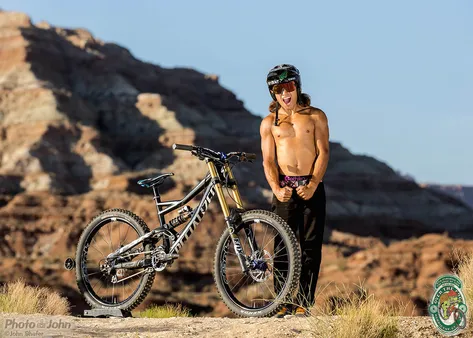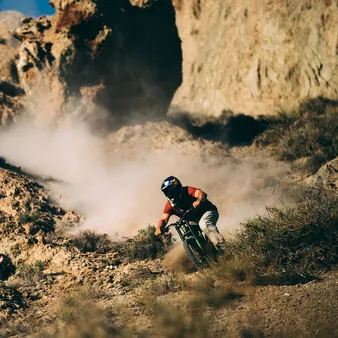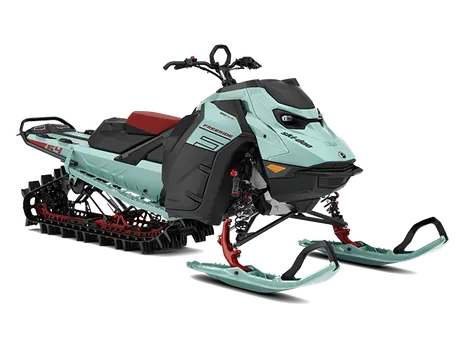Table of Contents
At Kizworld, we believe in the transformative power of adventure.** freeride** skiing and snowboarding are not just sports; they are expressions of freedom, creativity, and the human spirit. Join us as we explore the thrill of riding untamed slopes, where every descent is a unique and exhilarating experience. Discover the techniques, safety measures, and gear you need to make the most of your** freeride** adventures.
Feel the Rush and Discover the Art of Freeride: Mastering the Untamed Slopes
I. Freeride Basics
What is Freeride?
Freeride skiing and snowboarding are exhilarating activities that allow adrenaline enthusiasts to break free from groomed trails and explore the untouched beauty of the backcountry. With its emphasis on freedom, creativity, and pushing boundaries, freeriding is a thrilling sport that offers unique challenges and rewards. Whether you're a seasoned pro or just starting out, this comprehensive guide will provide everything you need to know about freeride skiing and snowboarding.
Essential Skills for Freeriding
Freeriding requires a combination of technical skills, physical fitness, and mental toughness. Some essential skills for freeriders include:
- Strong skiing or snowboarding skills
- Ability to navigate off-trail terrain
- Knowledge of avalanche safety
- Backcountry survival skills
- Physical fitness and endurance
- Mental toughness and resilience
Freeriders must be prepared to face challenging conditions, such as deep snow, steep slopes, and unpredictable weather. They must also be able to make quick decisions and adapt to changing circumstances.
Equipment for Freeriding
Freeriders need specialized equipment to safely and effectively navigate the backcountry. Some essential gear includes:
- Skis or a snowboard designed for freeriding
- Bindings that are compatible with your skis or snowboard
- Boots that provide support and comfort
- Helmet
- Goggles
- Avalanche transceiver
- Avalanche shovel
- Avalanche probe
- First-aid kit
Freeriders should also consider bringing additional gear, such as a backpack, food, water, and a map of the area they will be riding in.
Safety Tips for Freeriding
Freeriding can be a dangerous activity, so it is important to take steps to minimize the risks. Some safety tips for freeriders include:
- Always ride with a partner
- Get proper training in avalanche safety
- Check the avalanche forecast before you go riding
- Choose terrain that is appropriate for your skill level
- Be aware of the weather conditions
- Carry a map and compass
- Bring a first-aid kit
- Let someone know where you are going and when you expect to be back
By following these safety tips, freeriders can help to reduce the risks associated with this exciting sport.
II. Freeride Equipment
Freeride Equipment
Freeriding, while exhilarating, requires specialized equipment to ensure safety and maximize performance in off-trail conditions. Here are essential gear and accessories for freeride skiers and snowboarders:
- Skis/Snowboard: Choose the right skis or snowboard based on your skill level, terrain, and riding style. Consider factors like length, shape, and flex.
- Bindings: Bindings connect your boots to your skis or snowboard. Make sure they are compatible with your gear and provide a secure and comfortable fit.
- Boots: Freeride boots offer support and control while providing comfort for long rides. Look for boots that fit snugly and offer good ankle support.
- Helmets: A helmet is essential for protecting your head in case of a fall. Choose a helmet that meets safety standards and fits comfortably.
- Goggles: Goggles protect your eyes from the sun, wind, and snow. Choose goggles with a wide field of view and anti-fogging features.
- Clothing: Wear layers of clothing to stay warm and dry. Base layers should wick away sweat, mid-layers provide insulation, and outer layers protect against wind and moisture.
Additional gear that enhances safety and performance:
- Avalanche Transceiver: An avalanche transceiver helps locate skiers caught in an avalanche. Carry one and know how to use it properly.
- Probe: A probe is used to search for buried avalanche victims. It is a vital tool when traveling in avalanche-prone areas.
- Shovel: A shovel is used to dig out avalanche victims. It is as important as the probe and transceiver in avalanche safety.
- Backpack: Choose a backpack that can carry all your gear, including extra clothing, food, and water. Look for features like a hydration system and avalanche airbag.
- Ski Poles/Snowboard Leash: Ski poles provide balance and help with maneuvering. A snowboard leash keeps your snowboard from sliding away in case of a fall.
Always check the weather forecast and avalanche conditions before heading out. |
Ski or snowboard with a partner or group. |
Stay within your skill level and terrain limits. |
Be aware of your surroundings and potential hazards. |
Carry the necessary safety gear and know how to use it. |
Stay hydrated and take breaks when needed. |
By investing in quality freeride equipment and prioritizing safety, you can maximize your enjoyment and minimize risks while exploring the backcountry.
Related Posts:
- The Best Ski Resorts in the World
- How to Choose the Right Ski Bindings
- The Best Ski Helmets and Goggles
- The Best Snowboarding Boots and Bindings
- The Best Snowboarding Clothing and Apparel
III. Freeride Safety
Freeride Safety
Be Prepared
Before you hit the backcountry, make sure you're prepared for anything. This means having the right gear, knowing the area you're riding in, and being aware of the weather conditions.
- Wear a helmet, goggles, and other protective gear.
- Carry a backpack with food, water, and a first-aid kit.
- Check the weather forecast before you go.
- Tell someone where you're going and expect to be back.
By following these tips you're doing your best to stay safe. To learn more about making sure you're safe on your trip, check out our page: Freeride: The Best Spots in the World to Try It
Stay Aware
Once you're in the backcountry, be aware of your surroundings and the conditions you're riding in. Pay attention to the snowpack, the terrain, and the weather. If you see anything that looks dangerous, don't hesitate to turn around and head back to safety.
There are more details about the different types of freeriding, check out this article: Different Types of Freeriding
Control Your Speed
One of the most important things you can do to stay safe while freeriding is to control your speed. This means riding at a speed that is appropriate for the conditions and the terrain. If you're going too fast, you're more likely to fall or lose control.
Here is a table discussing the characteristics of different types of terrain found while freeriding.
Terrain Type | Characteristics |
|---|---|
Powder | Soft, light snow that is easy to ski or snowboard through. |
Packed snow | Snow that has been compacted by skiers or snowboarders. |
Ice | Hard, slippery snow that can be dangerous to ski or snowboard on. |
Moguls | Bumps in the snow that can be challenging to ski or snowboard through. |
Trees | Areas with trees that can be difficult to navigate through. |
To learn more about the equipment and gear you need for freeriding, check out this article: Freeride Equipment and Gear: What You Need to Know
Be Respectful
Finally, be respectful of the environment and other riders. Don't litter, and be mindful of the noise you make. Share the trails with other riders, and don't crowd them.
"Freeriding is all about having fun and expressing yourself. It's a great way to get away from the crowds and experience the beauty of the backcountry." - Anonymous
IV. Freeride Resorts
Freeride resorts offer a thrilling experience for skiers and snowboarders seeking untamed terrain and endless powder. These resorts cater to adventurous riders who crave the freedom to explore beyond the groomed trails and discover hidden gems in the backcountry. Here are some of the top freeride resorts around the world:
- Chamonix, France: Known as the birthplace of modern skiing, Chamonix is a legendary freeride destination with challenging off-piste terrain and stunning views of the Mont Blanc massif. Discover the best ski resorts in the world
- Whistler Blackcomb, Canada: With over 200 marked runs and endless backcountry terrain, Whistler Blackcomb is a skier's paradise. The resort boasts a variety of terrain for all skill levels, including steep chutes, open bowls, and tree runs. Explore the best ski resorts in Canada
- Niseko, Japan: Known for its abundant snowfall and pristine powder, Niseko is a freeride haven for skiers and snowboarders. The resort offers a variety of terrain, from gentle slopes to challenging backcountry runs, and is renowned for its tree skiing. Uncover the best ski resorts in Japan
- Aspen Snowmass, USA: Aspen Snowmass is a world-class ski resort with four distinct mountains, each offering unique terrain for freeriders. From the challenging steeps of Aspen Highlands to the wide-open bowls of Snowmass, there's something for every level of skier or snowboarder. Explore the best ski resorts in the USA
- Verbier, Switzerland: Verbier is a renowned freeride destination with challenging off-piste terrain and stunning scenery. The resort offers a variety of itineraries for experienced skiers and snowboarders, including the legendary Bec des Rosses run. Discover the best ski resorts in Switzerland
Resort | Location | Terrain | Lifts | Vertical Drop |
Chamonix, France | French Alps | Challenging off-piste terrain, stunning views | 60 | 2,800 m |
Whistler Blackcomb, Canada | British Columbia, Canada | Variety of terrain for all skill levels, steep chutes, open bowls, tree runs | 37 | 1,609 m |
Niseko, Japan | Hokkaido, Japan | Abundant snowfall, pristine powder, tree skiing | 24 | 1,207 m |
Aspen Snowmass, USA | Colorado, USA | Four distinct mountains, challenging steeps, wide-open bowls | 43 | 1,219 m |
Verbier, Switzerland | Valais, Switzerland | Challenging off-piste terrain, stunning scenery, legendary Bec des Rosses run | 82 | 2,200 m |
These are just a few of the many freeride resorts around the world. With careful planning and preparation, you can experience the thrill of freeriding in some of the most beautiful and challenging mountain terrain on the planet. Learn how to choose the right ski resort for your needs
V. Conclusion
Freeride skiing and snowboarding offer an unparalleled experience for those seeking adventure and exhilaration in the mountains. With careful planning, proper equipment, and a commitment to safety, you can unlock the freedom and creativity that freeriding has to offer. As the sport continues to evolve, new challenges and opportunities await those who dare to venture beyond the boundaries of groomed trails. Embrace the spirit of exploration, push your limits, and create unforgettable memories in the vast and untamed wilderness.